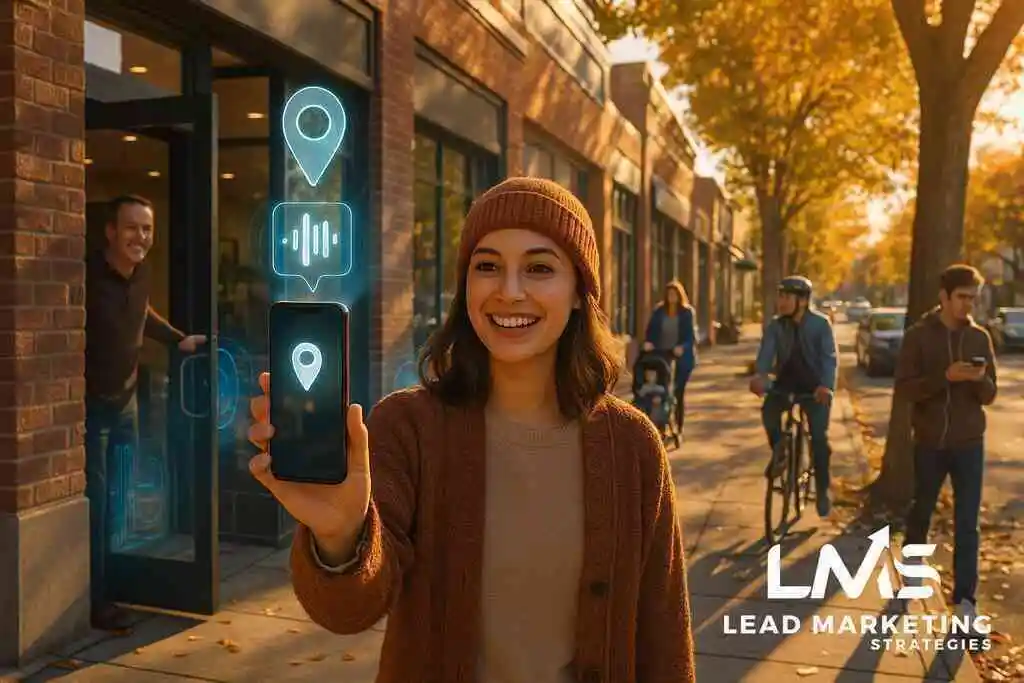
Unveiling the 2025 Elections Landscape
Understanding Political Marketing Evolution
The 2025 elections herald a new era in political marketing strategies marked by rapid evolution and technological advancements. Candidates and political marketing professionals are redefining approaches to connect with a more informed and digitally-savvy electorate. In this unprecedented landscape, understanding political marketing evolution becomes crucial to crafting relevant and impactful campaigns. Analyzing past successes, such as Barack Obama’s social media strategy in 2008, provides insights into integrating digital platforms effectively today. To thrive, political campaigns must innovate while staying true to timeless principles of voter engagement and issue advocacy.
Forecasting Voter Engagement Trends
Engaging the modern voter is more complex than ever before, as trends continue to shift rapidly within the political sphere. Predictive analytics, powered by AI, allows campaigns to forecast voter engagement trends with greater accuracy, enabling targeted outreach. Understanding these patterns assists in delivering tailored messages that resonate with specific demographics, such as millennials or Gen Z voters. Interactive platforms, from virtual town halls to immersive social media experiences, are becoming indispensable tools. Campaigns that adapt and utilize data to anticipate voter interests and concerns will be those that resonate most profoundly come election time.
Deciphering Digital Campaigning Shifts
Digital campaigning has undergone significant transformations since its inception, with modern strategies integrating multi-channel approaches to reach diverse audiences. These shifts demand that campaign managers stay ahead of emerging platforms and technologies. Successful digital campaigns now intertwine traditional marketing tactics with innovative digital campaigning strategies, leveraging video content, podcasts, and interactive social media posts. Adaptation to new tools like artificial intelligence chatbots and virtual reality experiences further enhances voter interaction. Campaigns that decipher and embrace these shifting paradigms can create a more dynamic and engaging experience for voters, fostering stronger connections and lasting impressions.
Crafting Future-Forward Political Branding
Strategic Candidate Positioning for 2025
The 2025 elections necessitate a sophisticated approach to strategic candidate positioning, intertwining ancient political wisdom with modern-day innovations. As voters’ perceptions are shaped largely by an array of media, crafting an authentic and relatable candidate image becomes paramount. Positioning tactics must account for both broad appeal and resonation with core voter groups, balancing consistency with adaptability to local issues. By leveraging nuanced storytelling and personalized engagement, candidates can distinguish themselves in the crowded political arena. Continual refinement and adaptation in positioning strategies will enable political figures to remain aligned with the electorate’s evolving values and expectations.
Harnessing Social Media Election Strategies
Social media platforms are a cornerstone of contemporary election strategies, offering unprecedented opportunities for direct and impactful voter engagement. Utilizing social media election strategies allows campaigns to harness the power of platforms like Instagram, TikTok, and X. Developing viral content, live interactions, and authentic communication avenues fosters greater voter connection and mobilization. Additionally, data analytics within social media provide insights into voter behavior and sentiment, allowing campaigns to tailor messaging with precision. The dynamic nature of social media demands a strategic approach that is both flexible and comprehensive, ensuring a sustained and meaningful influence on the electorate.
Political Advertising in a Digital Era
In the digital era, political advertising transcends traditional print and television media, demanding integration into digital ecosystems. This shift involves leveraging programmatic advertising, social media ads, and video content to communicate campaign messages effectively. Political advertising must present a coherent narrative across all platforms, maintaining brand integrity while adapting to the format-specific nature of digital media. Interactive content, from augmented reality experiences to AI-driven personalized ads, fosters engagement and awareness more effectively than conventional methods. As digital consumption patterns evolve, campaigns must invest in innovative advertising techniques to capture audience attention and drive election outcomes.
Building Voter Trust Through Authentic Messaging
In an age of information overload and skepticism, building voter trust through authentic messaging is a cornerstone of effective political branding. Authentic messaging involves transparency, consistency, and sincerity, aligning candidates’ public personas with genuine intentions and policy commitments. Voter engagement hinges on the capacity to convey empathy, address concerns candidly, and establish a narrative that resonates emotionally with the public. Trust-building requires concerted efforts in dialogue, listening, and responding to constituents’ needs, reinforcing the perception of candidates as reliable and aligned with the electorate’s best interests. By prioritizing authenticity, campaigns can forge enduring relationships with voters, facilitating electoral success.
Leveraging Data Analytics for Political Success
In-depth Voter Segmentation Techniques
Understanding and implementing effective voter segmentation techniques is pivotal for campaigns to tailor their strategies adeptly for the 2025 elections. This process involves classifying potential voters into distinct groups based on demographics, psychographics, and past voting behaviors. By analyzing such data, campaigns can identify key voter segments that require specific outreach approaches. This segmentation facilitates crafting personalized messages and choosing the right communication channels, ensuring that campaign efforts resonate with the broad swath of the electorate. As a result, political figures can not only target their core support but also attract undecided and swing voters, solidifying their base while expanding their reach.
Utilizing Campaign Data Analytics
The role of campaign data analytics has become indispensable in orchestrating successful modern political campaigns. By harnessing advanced data analytics tools, campaigns are empowered to dissect voter information intricately, gaining insights to sharpen their strategies. From identifying key demographics to predicting voter turnout, analytics help in formulating data-driven decisions that enhance the efficiency and impact of campaign activities. Furthermore, integrating predictive modeling enables campaigns to anticipate voting patterns and adjust their efforts accordingly. Political entities that invest in robust analytics frameworks can understand their electorate comprehensively, leading to more focused and impactful campaign initiatives.
Real-Time Voter Feedback Loops
In the rapid-paced digital milieu of 2025 elections, establishing real-time voter feedback loops is crucial for campaigns aiming to stay adaptive and responsive. By utilizing platforms that facilitate immediate voter interaction and feedback, campaigns can actively refine their messages and strategies in alignment with voters’ evolving preferences. This dynamic exchange not only enhances voter engagement but also builds trust, as it demonstrates a campaign’s commitment to addressing constituents’ concerns. Incorporating tools such as live polling, social media interactions, and digital town halls can spearhead this feedback collection. As campaigns continuously iterate based on this real-time input, they remain agile and better equipped to resonate with and mobilize the electorate.
Measuring Campaign Effectiveness: Tools and Metrics
Evaluating campaign success hinges on the selection and analysis of appropriate tools and metrics, a cornerstone for sustained electoral achievement. Metrics such as voter engagement rates, digital advertising reach, and social media interactions provide quantifiable indicators of a campaign’s influence. Utilizing tools like A/B testing, sentiment analysis, and performance dashboards, campaigns can assess the effectiveness of their strategies swiftly. Moreover, advanced reporting systems enable organizations to monitor their progress against set objectives, ensuring alignment with overarching goals. By diligently applying these tools and metrics, campaigns can fine-tune their approaches and achieve a deeper understanding of what strategies are driving the most significant voter impact.
Integrating Innovative Political Campaign Tactics
Grassroots Mobilization in the Digital Age
The digital landscape of 2025 presents new opportunities for grassroots mobilization online through advanced political marketing strategies. Digital platforms enable campaigns to organize localized efforts swiftly, amplifying their reach and effectiveness. By harnessing digital tools, such as social media and messaging apps, campaigns can coordinate volunteers, spread awareness, and mobilize support on a large scale. The transition to online grassroots movements also permits wider inclusion, tapping into diverse demographics and fostering community engagement. By creating platforms where supporters can interact, share ideas, and participate in campaign activities, grassroots strategies can maintain their impact, energize the base, and drive voter turnout effectively.
Influencer Collaboration in Politics
In 2025, influencer collaboration strategies are becoming integral to political marketing, reflecting modern digital marketing trends. Influencers possess the power to sway public opinion and drive engagement through their credibility and vast follower bases. Engaging these figures in political advocacy can amplify campaign messages, reaching audiences that traditional media might not penetrate. By aligning with influencers whose values resonate with campaign platforms, political figures can enhance authenticity and relatability. Crafting strategic partnerships with influencers enables campaigns to reach diverse voter segments and mobilize demographic groups crucial to election success. This collaboration signifies the evolving interplay between politics and digital content creation, harnessing personal brands to shift voter perceptions and drive engagement.
Targeting Swing Voters with Precision
Targeting swing voters is crucial for securing success in close electoral races, necessitating precision-focused strategies. Utilizing advanced analytics and data-driven methods, campaigns can identify potential swing voters more accurately than ever before. Techniques like geotargeting and psychographic profiling enable personalized outreach, allowing campaigns to focus resources effectively. Tailored messaging, aligned with the concerns and values of these pivotal voter groups, increases the likelihood of changing their voting intentions. Employing a mix of digital and traditional outreach ensures comprehensive coverage, while precision-targeted tactics align campaign efforts with shifting voter sentiments effectively. This focused approach maximizes influence within key segments, enhancing potential electoral gains by converting swing voters into active supporters.
Election Day Strategies for Maximum Impact
Implementing campaign day tactics designed for maximum impact can be the difference between victory and defeat. On election day, orchestrating a flawless strategy requires comprehensive planning and real-time responsiveness. Campaigns must mobilize volunteers, utilize digital channels for voter reminders, and guarantee that logistical frameworks support high turnout. Encouraging voter participation through innovative tactics, such as organizing transport or promoting last-minute outreach via social media, can significantly enhance voter turnout. Additionally, leveraging data to identify and target areas with historically low turnout can increase effectiveness. Anticipating challenges and adapting strategies in real time ensures that campaigns can address obstacles promptly, ensuring an impactful election day presence. These methods underscore the importance of thoughtful planning and execution, ultimately contributing to the overarching goal of electoral victory.
The Nexus of Political Content and SEO
Maximizing Political SEO for Election Visibility
Optimizing political SEO is vital for increasing a campaign’s visibility during the competitive landscape of the 2025 elections. By employing strategic political SEO optimization, campaigns can enhance their search engine rankings and ensure their messages reach broader audiences. Effective use of keywords, meta tags, and backlinks is crucial for this strategy, enabling greater exposure on platforms like Google. Monitoring SEO performance and adapting strategies based on analytics ensures that the campaign remains relevant and accessible to potential voters. By aligning content with search engine algorithms, political campaigns can solidify their online presence and maintain steady voter interaction throughout the election cycle.
Crafting Engaging Political Content
Crafting engaging political content is indispensable for campaigns aiming to captivate and inform the electorate. Innovative content marketing for elections involves creating compelling narratives across diverse platforms such as social media and campaign websites. It requires a deep understanding of the target audience’s values, concerns, and media consumption habits. By incorporating multimedia elements like videos, podcasts, and interactive features, campaigns can foster deeper connections and sustain meaningful dialogue with voters. These content strategies must be regularly re-evaluated and tailored to reflect the evolving political climate and electoral priorities, ensuring that campaign messaging remains impactful and resonates emotionally with the electorate.
Optimizing Election Website Design
The design of campaign websites serves as the digital cornerstone for political engagement, necessitating meticulous planning and execution. Insights from web design for campaign websites emphasize the importance of user-friendly interfaces, streamlined navigation, and responsive design. Websites should prioritize accessibility, incorporating ADA-compliant features to reach all voter demographics effectively. Integrating clear calls-to-action, easy-to-find information on policy positions, and vibrant visuals that align with the campaign’s branding augments the user experience. Ensuring fast load times and mobile compatibility enhances user interaction, cementing the website as a pivotal tool for voter outreach and engagement within a digital-first election landscape.
Online Fundraising Strategies for Campaigns
Harnessing fundraising strategies online is crucial for political campaigns aiming to sustain their financial activities throughout the long election cycle. Campaigns can leverage tools such as crowdfunding platforms, personalized donation appeals, and recurring giving programs to maximize donor engagement. Targeted email campaigns that segment audiences based on past contributions and interests create personalized experiences that foster donor loyalty. Additionally, transparency in how funds are allocated can increase trust and motivate further financial support. By integrating advanced analytics to track fundraising performance, campaigns can fine-tune their approaches, ensuring financial stability and competitive advantage in the lead-up to the 2025 elections.
Forging Bipartisan Pathways and Trust
Implementing Bipartisan Marketing Approaches
In the ever-divisive political landscape of the 2025 elections, employing bipartisan marketing tactics is essential for fostering unity and consensus. Campaigns must focus on common ground issues that resonate with a wide spectrum of voters, crossing traditional party lines. Messaging should emphasize shared values such as economic stability, national security, and community well-being. Leveraging collaborations between diverse political groups can expand a campaign’s reach and credibility. This approach not only builds cross-party alliances but also sets the stage for constructive dialogue and policy making that reflect wider public interest, ultimately enhancing campaign effectiveness.
Building Trust Across Party Lines
Building trust across party lines is paramount in an era where voter skepticism is rife. Campaigns must emphasize transparency and consistency to dismantle barriers of distrust and foster openness. Engaging with communities through town halls and listening sessions can humanize candidates and demonstrate genuine concern for constituents’ issues, regardless of political affiliation. Utilizing social media platforms to share behind-the-scenes glimpses into the campaign’s workings helps demystify processes and builds relatability. Trust-building initiatives can result in broadened support bases by demonstrating the candidate’s commitment to representing all voices, crafting a political image rooted in integrity and reliability.
Crafting Messages that Resonate
Crafting messages that resonate with a broad audience requires a nuanced understanding of voter priorities and sentiments. Campaigns should employ political branding techniques that align with voters’ values, utilizing language that appeals to emotions and encourages reflection. Content must be tailored to address the unique preferences and concerns of different demographic groups without alienating others. By employing empathetic storytelling and relatable narratives, candidates can engage voters on a deeper level. This strategic communication approach enhances voter connection, ensuring messages are not only heard but internalized, ultimately driving stronger voter engagement and mobilization.
Conclusion: Paving the Way for Election Victory
Synthesizing Strategies for 2025 Success
Harnessing the collective power of modern political marketing strategies is crucial for navigating the complex terrain of the 2025 elections. By integrating innovative tactics such as swing voter targeting and leveraging insights from digital marketing agencies near Long Island, campaigns can enhance their outreach and impact effectively. As political landscapes become increasingly digital, successful campaigns will synthesize data-driven insights with authentic messaging to captivate the electorate. This requires a comprehensive understanding of voter demographics, a meticulous approach to political branding, and an adept use of social media election strategies. Ultimately, the confluence of these elements will determine the trajectory of electoral success.
Predicting the Future of Political Marketing
The future of political marketing promises to be shaped by rapid technological advancements and evolving voter preferences. Campaigns must anticipate changes in voter engagement trends and digital campaigning shifts to stay ahead. Emerging technologies such as augmented reality, AI-driven analytics, and virtual chatbots will redefine how political figures interact with constituents. Predicting these trends involves recognizing the potential of personalized voter experiences and deepening engagement through interactive platforms. Those who adapt swiftly will not only stay relevant but also set new standards in political campaign marketing, thus steering the future of electoral engagement.
Empowering Campaigns with Insightful Tactics
The empowerment of political campaigns lies in their ability to employ insightful tactics that resonate with the modern voter. By fostering voter trust through authentic messaging and bipartisan marketing approaches, campaigns can build robust support bridges across party lines. Engaging in real-time voter feedback loops and executing election day strategies with precision further bolster campaign effectiveness. Moreover, ongoing refinement of digital marketing strategies, particularly those focusing on digital marketing agencies near Long Island, ensures campaigns are poised for maximum reach and impact. As the political marketing landscape continues to evolve, campaigns must leverage these insights to engage, persuade, and mobilize the electorate toward electoral victory in 2025.
Frequently Asked Questions
Question: How can political branding help candidates in the 2025 elections?
Answer: Political branding is crucial for candidates looking to make a lasting impact in the 2025 elections. It involves creating an authentic and relatable image through strategic candidate positioning, which resonates with the electorate’s values and expectations. Marketing Tip offers insights into effective political branding by combining traditional strategies with modern-day innovations. By leveraging storytelling, personalized engagement, and consistent messaging across social media platforms, candidates can strengthen their campaign presence. These efforts build brand awareness and voter trust, enhancing a campaign’s ability to connect with diverse voter demographics.
Question: What role does campaign data analytics play in improving election outcomes?
Answer: Campaign data analytics is indispensable for orchestrating successful modern political campaigns, especially for the 2025 elections. Utilizing advanced analytics tools allows campaigns to dissect voter information, predict voter turnout, and tailor their strategies with precision. Check out Understanding the Core of Digital Branding in NY Future. Marketing Tip emphasizes the use of predictive modeling and deep voter segmentation techniques to anticipate voting patterns and engage with the electorate effectively. By investing in robust analytics frameworks, campaigns can craft data-driven strategies that enhance outreach efforts and maximize voter engagement, ultimately leading to more impactful election outcomes.
Question: How can online fundraising strategies benefit political campaigns?
Answer: Online fundraising strategies are pivotal for sustaining financial activities throughout the election cycle. Marketing Tip provides expertise on harnessing digital tools such as crowdfunding platforms, personalized donation appeals, and recurring giving programs. These strategies, combined with transparency in fund allocation and advanced analytics, foster donor loyalty and trust. Learn more about Exploring Advanced Business Marketing Tools with LMS. By segmenting audiences based on past contributions and interests, campaigns can create personalized experiences that motivate financial support. Leveraging online fundraising methods ensures financial stability and gives campaigns a competitive edge in the lead-up to the 2025 elections.
Question: How do social media election strategies enhance voter engagement for the 2025 elections?
Answer: Social media election strategies are central to modern political marketing, offering unparalleled opportunities for direct voter engagement. In the context of the 2025 elections, Marketing Tip guides campaigns in harnessing platforms like Instagram, TikTok, and X to develop viral content and live interactions. Utilizing these platforms for data analytics provides insights into voter behavior, enabling precise message tailoring. By crafting comprehensive and flexible social media strategies, campaigns can mobilize their voter base effectively, ensuring sustained and meaningful influence on the electorate. Dive into the Guide to Best Practices in Social Media for NY Businesses.
Question: What are some digital campaigning shifts mentioned in the blog Exploring Political Marketing Strategies for 2025 Elections?
Answer: The blog Exploring Political Marketing Strategies for 2025 Elections discusses how digital campaigning has transformed with the integration of multi-channel approaches. These shifts involve leveraging video content, podcasts, and interactive social media posts to create dynamic voter experiences. Marketing Tip emphasizes the importance of staying ahead of emerging platforms and technologies, such as AI chatbots and virtual reality experiences, to enhance voter interaction and engagement. By understanding and adapting to these digital campaign shifts, campaigns can foster stronger voter connections and leave lasting impressions in the 2025 elections.











